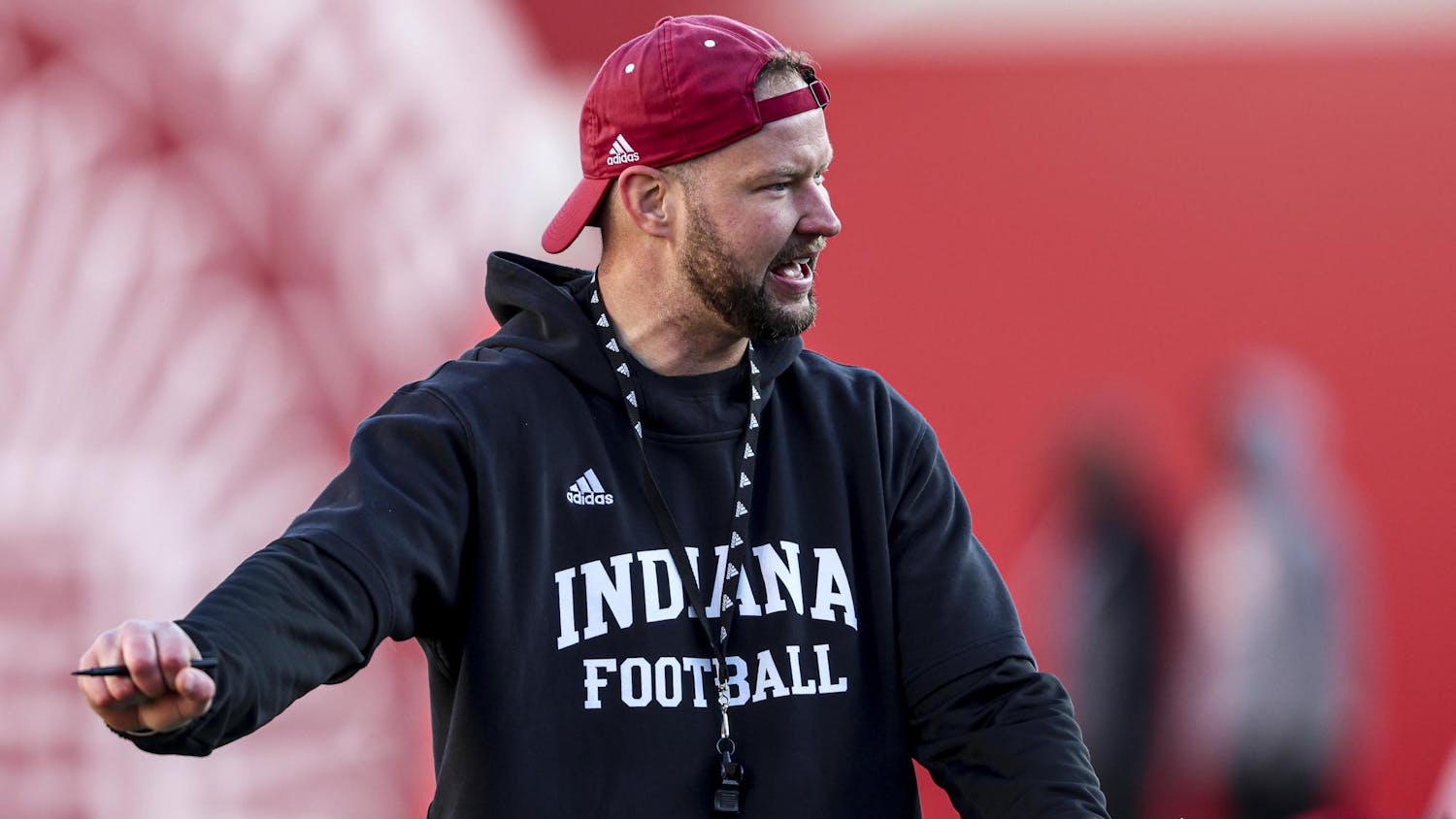While coaches often prepare the game plan and athletes execute on the field, there is another group of people at IU that helps the athletic teams achieve -- the student athletic trainers. \nMany recognize their presence, but few recognize their skill and importance.\nThrough the School of Health Physical Education and Recreation, the Department of Kinesiology offers a degree in athletic training. \nThe program is two-fold, said Katie Grove, who has served IU for 10 years and is an athletic trainer overseeing softball. \n"Our program's basis is for an undergrad major that will prepare students not only serve the teams here, but to become a certified athletic trainer when complete," Grove said.\nTo receive this certification, students must pass the National Board Exam to become a certified athletic trainer. The three-part test consists of an oral practical, written exam and simulation of injuries. \nThis is no easy major, said Grove, who told how one section of the curriculum includes 1,000 hours of clinical work. Only 18 applicants are accepted into the program each year.\nAthletic training is one of the smaller majors offered on the Bloomington campus. IU is only one of four schools in the country that offers both an undergraduate and graduate program in athletic training. \nThe program offers a bachelor of science degree in kinesiology, which leaves the possibility for a teaching option. As the trainers muster their way through school, tasks become more difficult. \nMost people in the program are either former high school athletes with a strong interest in medicine or people who served as trainers in high school, according to senior Matthew Culp.\n"I knew I wasn't going to make my sports dreams come true out of high school, and I had a strong interest in medicine, so this was the perfect fit for me," Culp said. \nCulp is spending this year fall working with the football team. During the season, his demands included working a 30-35 hour week.\n"We usually get there before the athletes arrive, and are there until they are long gone," Culp said. \nCulp's tasks for the team included pre-practice treatments, attending practices, post-practice treatments and rehabilitation. Culp also attended most of the games, including road trips, making for a crammed schedule.\n"The sheer volume of athletes requires football to be one of the more demanding sports," he said. \nDespite the rigorous demands, Culp was able to find the fun in the job. \n"Having an athlete you can help makes me feel good," he said. "It's the little things, like when an athlete comes up to you and thanks you after helping them." \nCulp worked for the football team, but each senior has his own sport to supervise. Sophomores rotate thought the different sports to get an idea of how each sport operates. Junior are given more responsibility and rotate every six weeks between teams. Seniors are given a sport to work with for the entire year.\nThe athletic training faculty assigned senior Jessica Levine to the wrestling team for her final go-round. Levine said the most rewarding aspect of this for her is to see someone that is hurt who wants to compete and watching that injured person become victorious because of her help. Wrestling demands that Levine work with the team from 6:30-9 a.m., attend class and return to work with the team from 2:30-7 p.m. \nLevine hopes to be a physical therapist and work for the Olympics Committee.\nMany IU alumni from the program have found a place in both professional and amateur sports. Grove said that during her time supervising the program, she has seen a few people move on to professional sports, including Doug Speen; who formerly worked for the NFL's Cincinnati Bengals.\nThe skills learned at IU enable the graduates to move on the professional sports, and the Hoosiers athletes regularly voice their praise of the student athletic trainers and their abilities. \nJunior tennis player Amanda Field said that while she isn't injured often, when she does receive treatment from the trainers, it is quite effective. \n"It relieves my aches and sores," Field said. "I've never had a major surgery, but (the trainers) do cater to my minor injuries and ailments." \nTeammate Christina Solli, a freshman, spent time rehabbing a bulging disk earlier this month and praised the student trainers for their work on treating injuries effectively. \n"They have a really good program here," Solli said. "They are a great addition to the athletics program because of their caring nature and the personal attention they give"
Trainers help athletes stay healthy
Get stories like this in your inbox
Subscribe





